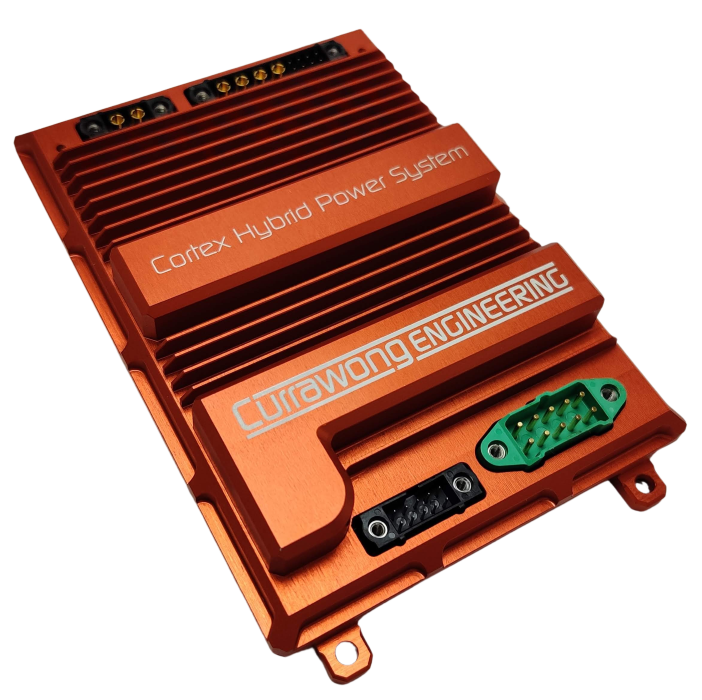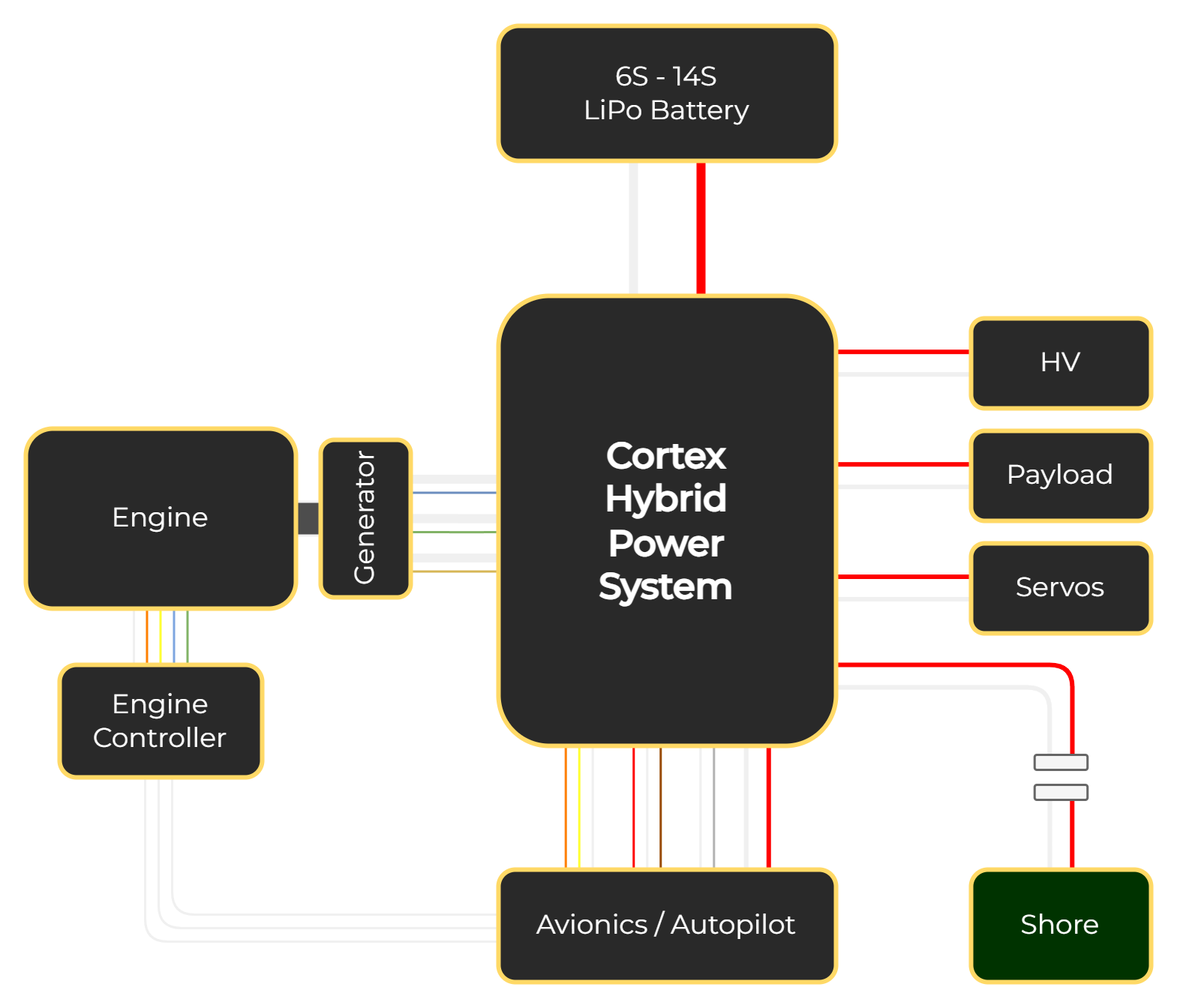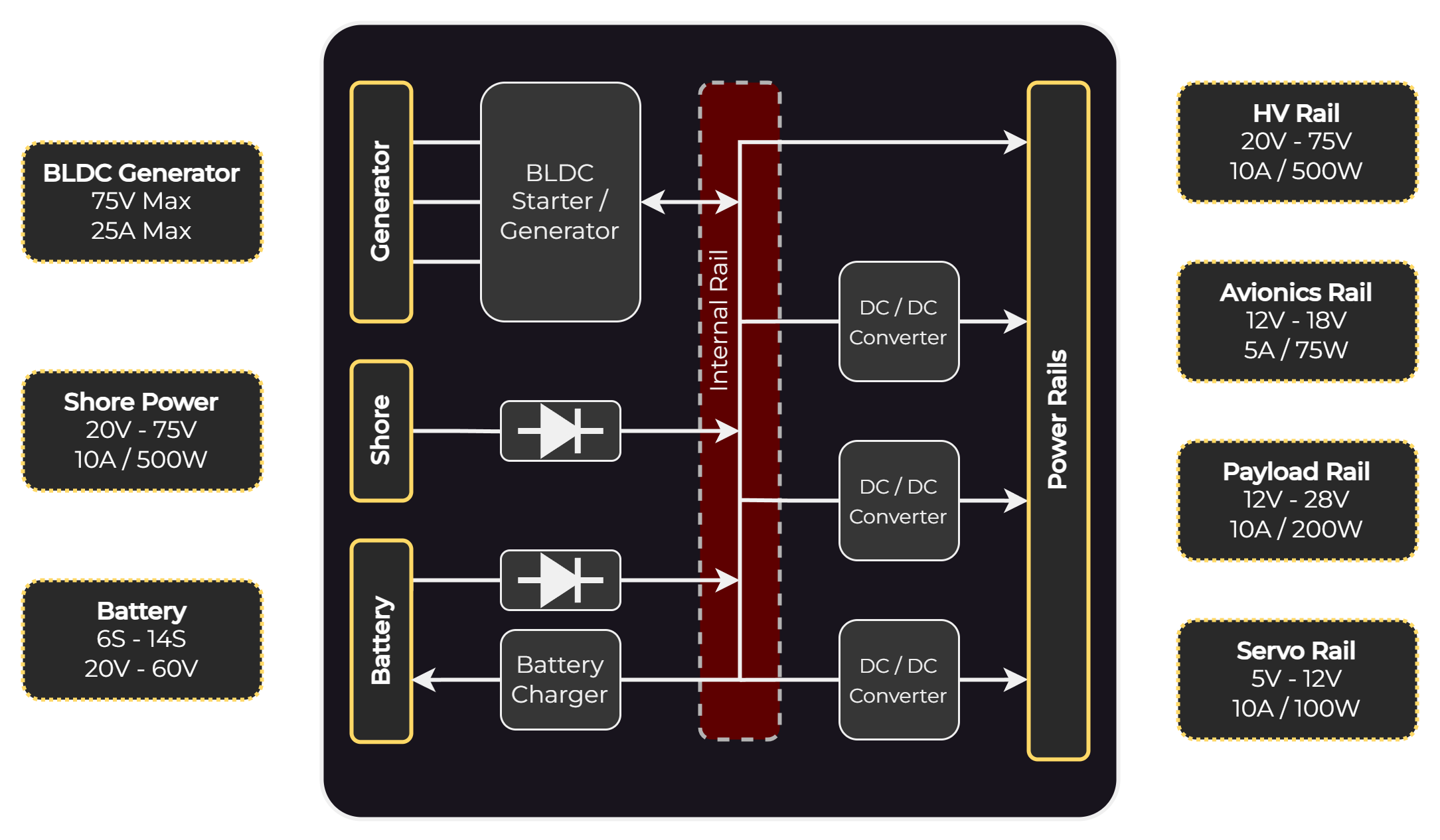cortex hybrid power system (CHPS)
The Cortex Hybrid Power System (CHPS) provides up to 750W of electrical power for small UAVs in an amazingly small form factor for a Power Management Unit (PMU). Utilizing Currawong’s hybrid power architecture, power can be delivered from either the generator, or the battery, or both simultaneously. The power unit also provides integrated engine restarting and engine boost / overdrive capability.
General Specifications:
Part Number |
CE2337 |
Length |
120mm |
Width |
78mm |
Height |
20.4mm |
Weight |
188g |
Power |
Up to 750W |
Voltage |
24V – 60V |

• Remotely activated engine starting.
• Three independent regulated output rails.
• Failsafe power provided by the connected battery.
• Supports a wide range of battery voltages (24V / 6S up to 56V / 14S).
• Integrated battery charger.
• CAN or RS232 control and telemetry interface.
• High efficiency hybrid design reduces size and weight.
• Shore power input provides full suite of regulated rails and battery charging.
typical setup:

feature set:
Quad Plane Compatible
The Cortex Hybrid Power System (CHPS) has been specifically designed to work with a single battery when used in quad planes. The vehicle can use the VTOL high voltage battery pack to start the engine and then CHPS will recharge the pack once the vehicle is underway.
Tightly Integrated
The Cortex Hybrid Power System provides class leading SWaP, by leveraging Currawong’s motor control and power electronics pedigree, and utilizing the latest available electronics technology.
Integrated Starting
Integrated starting simplifies engine operation, providing safe and reliable remote engine starting. The hybrid power architecture also keeps the engine running during transients or poor fuelling conditions.
Hybrid Power Delivery
The hybrid design of the CHPS ensures consistent power delivery under all conditions. The controller can provide energy from the engine and connected battery simultaneously, and controls power flow based on varying system power demands. Short term high electrical load requirements are seamlessly managed.
Intelligent Power Limiting
The CHPS provides a unique power limiting feature which intelligently regulates the amount of power taken from the generator to ensure that the engine and generator are operated within safe limits. At low RPM, where drawing excess power may otherwise stall the engine, the CHPS will supplement with battery power to ensure the engine is not overloaded.
Battery Charging
An integrated regulated battery charger ensures that the external battery remains at the correct state of charge during operation. When excess energy is available from the generator, the CHPS will actively monitor and charge the battery. Battery voltage is fully configurable across the supported voltage range (24V to 56V).
Wide Voltage Range
The CHPS supports high voltage battery operation (up to 14S LiPo / 56V). This allows the aircraft to run off a single high voltage battery pack if required. The CHPS will also run with a battery input as low as 24V (6S) without issue.
Regulated Rails
In addition to regulated battery charging, three regulated voltage rails are provided for running external aircraft system. An unregulated high voltage rail is also provided which can be used as an input for external power regulation systems.
Advanced Telemetry
CHPS supports multiple command, control and telemetry interface options. CAN bus (supporting either DroneCAN or PiccoloCAN protocols) or UART interfaces ensure that CHPS can be easily integrated with any autopilot or flight computer.
System architecture:

example applications:
• Remote engine starting; The battery powers the 3-phase starter generator through an ideal diode to crank the engine.
• Shore power; to prevent battery discharge whilst grounded, shore power can be supplemented to maintain the high voltage rail.
• Battery charging; when the battery rail droops below a threshold voltage the BLDC generator is used to power the battery charger.
• Battery supplement; when the BLDC generator cannot provide sufficient power for the electronics and the HV rail droops, the battery can provide power and keep the voltage steady.
Currawong Engineering
54 Patriarch Drive, Huntingfield, Tasmania 7055
(03) 6229 1973
Email or Follow Us
admin@currawong.aero
Canada and the USA
For USA and Canada ESC customers, please contact our partner, Power4Flight
